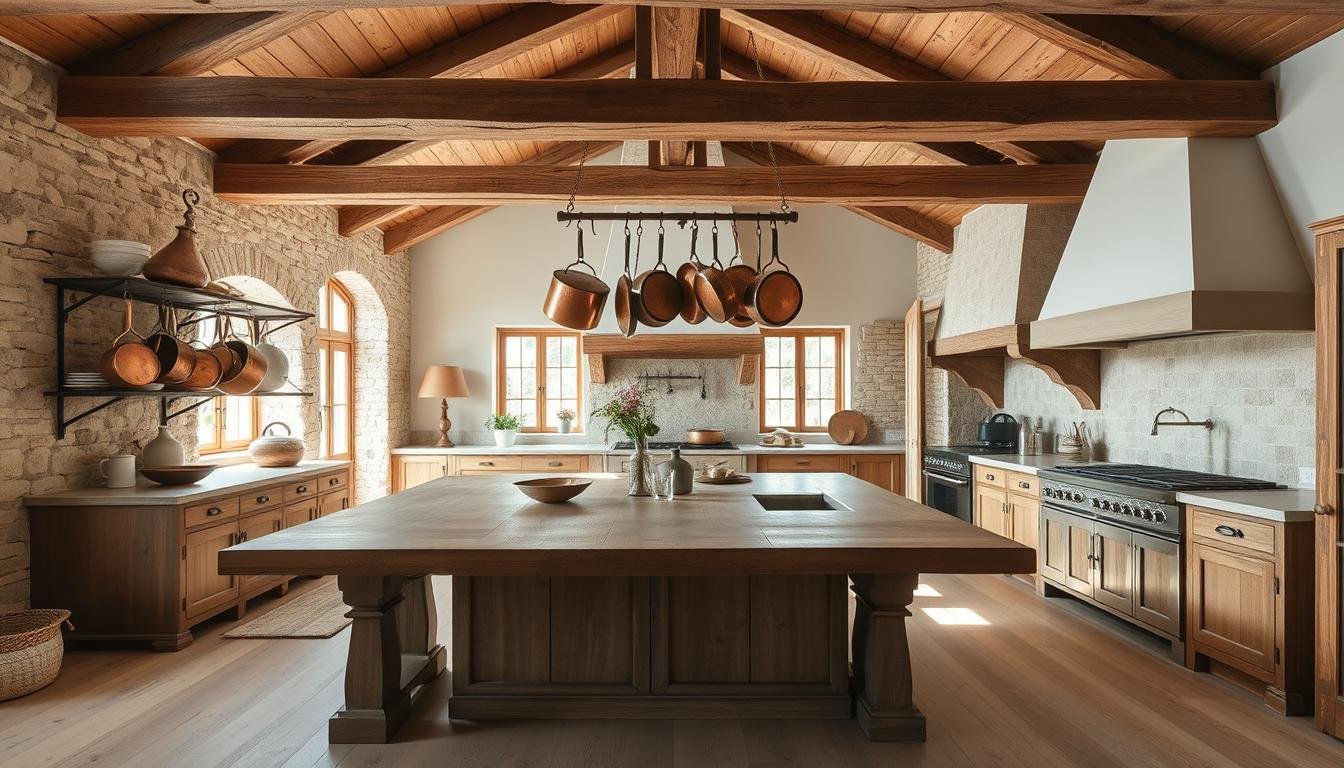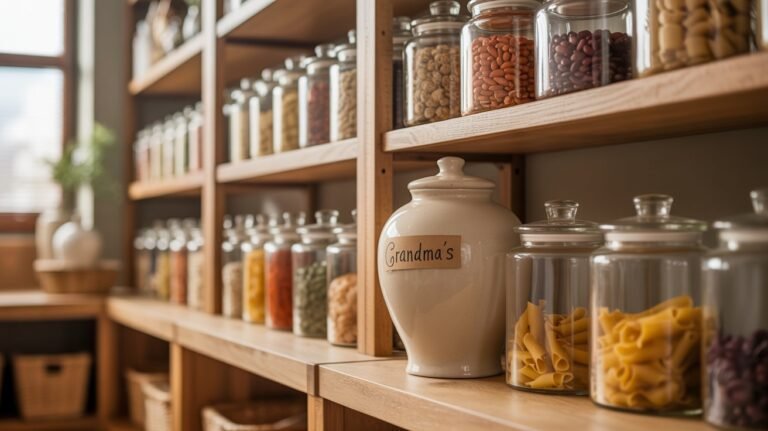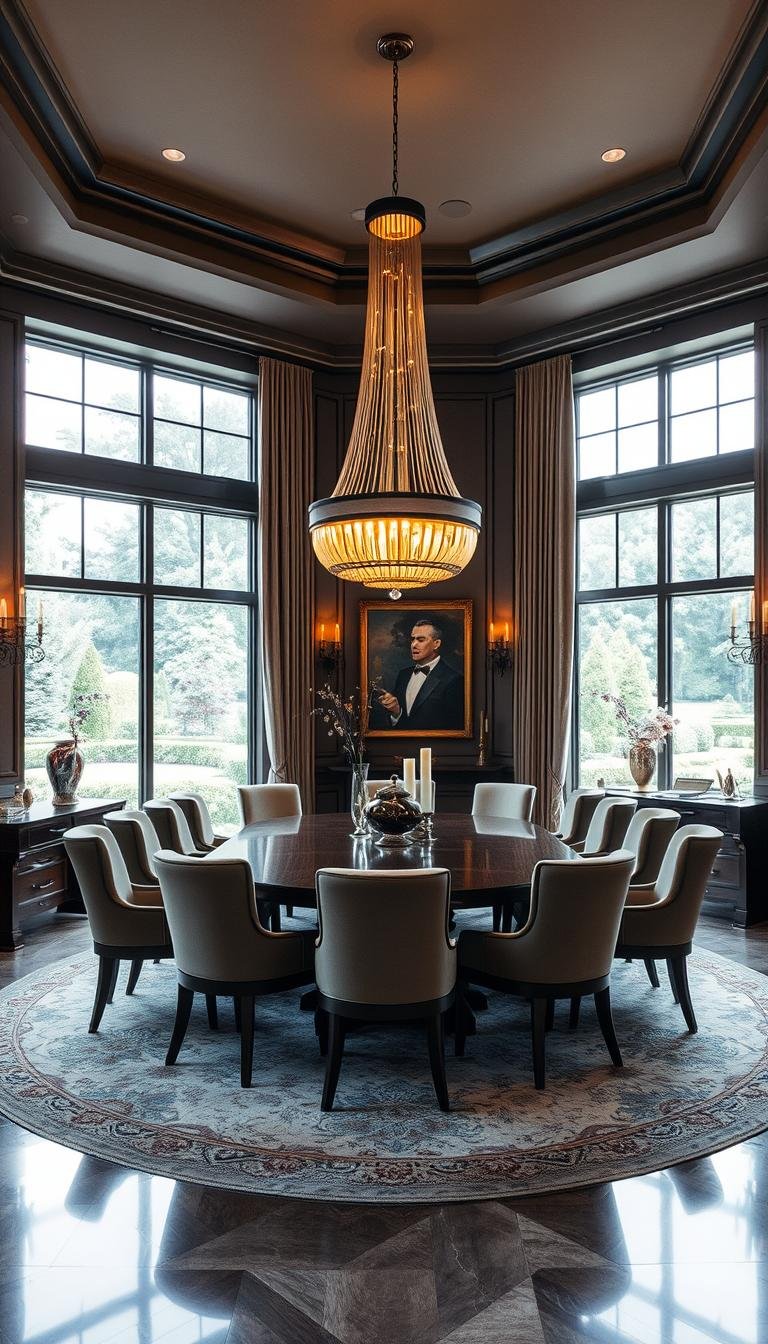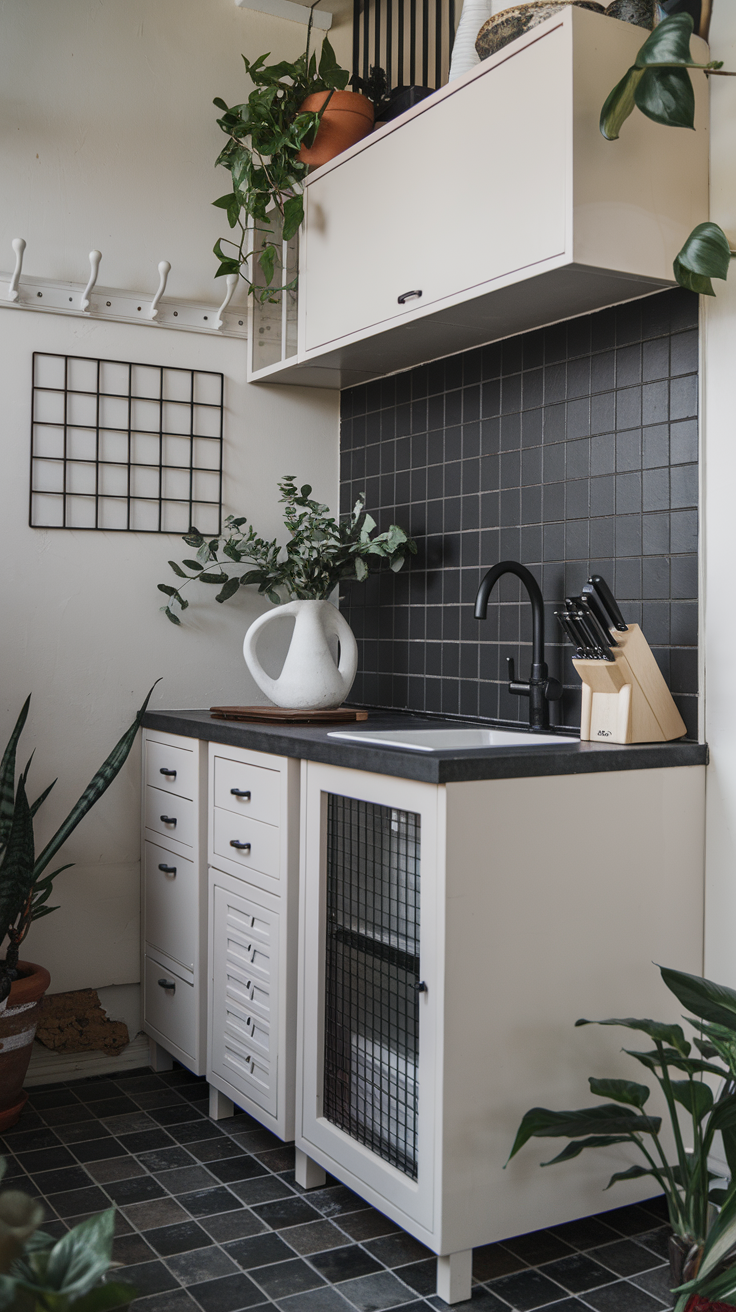French Farmhouse vs French Cottage Kitchen: What’s the Difference?
Ever stood in the middle of your kitchen, Pinterest board open, wondering why your “French country” inspiration pics look like they belong to completely different planets? Trust me, you’re not alone. After spending years obsessing over copper pots and rustic beams, I’ve finally cracked the code on what separates a French farmhouse kitchen from its cottage cousin. Spoiler alert: it’s not just about how many roosters you’ve managed to cram onto your countertops. 🙂
This post contains affiliate links. If you purchase through these links, I may earn a small commission at no extra cost to you. Learn more here.
What Defines a French Farmhouse Kitchen?
A classic French farmhouse kitchen showcasing rustic elements and practical workspaces
The French farmhouse kitchen isn’t just a style—it’s a lifestyle. Born out of necessity rather than design magazines, these kitchens were the beating heart of rural French properties where function ruled over form. Think of the hardworking farmer’s wife who needed practical spaces to feed a small army of farmhands.
What makes a French farmhouse kitchen instantly recognizable is its unapologetic rustic charm combined with a certain elegance that only the French could pull off. It’s like your favorite pair of work boots that somehow look good with a dress. The perfect balance of practical and pretty.
Key Elements of French Farmhouse Style
The bones of a French farmhouse kitchen are substantial and meant to last generations. You’ll find:
- Exposed wooden beams that aren’t perfectly straight (and that’s the point)
- Stone or terracotta floors that have withstood centuries of boots and spills
- Plaster walls with a bit of character (aka imperfections)
- Large stone sinks that could handle washing everything from vegetables to babies
- Open shelving displaying everyday dishes and cookware
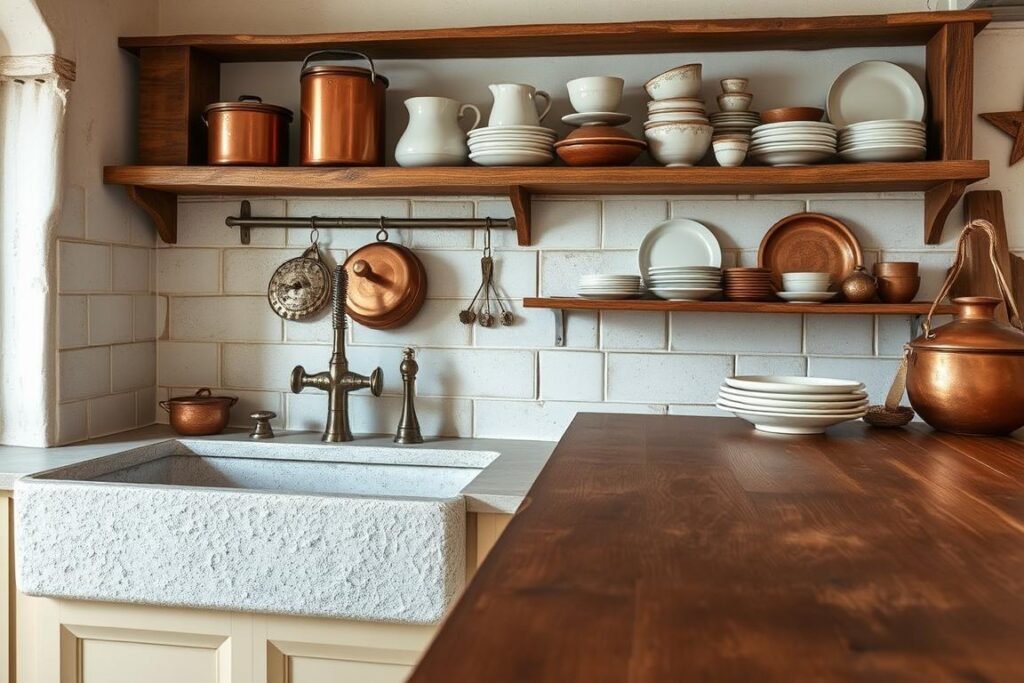
Color Palette and Materials
The French farmhouse color scheme isn’t trying to make a statement—it’s letting the materials speak for themselves. You’ll see:
- Warm neutrals like cream, beige, and soft whites
- Natural wood tones (often with visible grain and knots)
- Earthy stone colors
- Occasional pops of French blue or muted red
Materials are honest and substantial—no veneer or laminate here! Everything is chosen for durability and function, with beauty as a happy side effect. Wood, stone, iron, copper, and ceramic dominate the space.
FYI, if your kitchen has more than three perfectly matching elements, you might be drifting away from authentic French farmhouse territory. These kitchens evolved over time, not from a single shopping trip. :/
French Cottage Kitchen: Cozy with Character

A French cottage kitchen featuring delicate details and a more refined aesthetic
If the French farmhouse kitchen is the hardworking older sibling, the French cottage kitchen is its slightly more refined younger sister who still knows how to roll up her sleeves. These kitchens belong to smaller homes—think village dwellings rather than sprawling farm estates.
The French cottage kitchen (or cuisine de cottage if you want to sound fancy at your next dinner party) embraces charm and intimacy. It’s where you’d want to sit with a single friend over coffee rather than feed a harvest crew.
Distinctive Features of French Cottage Style
French cottage kitchens have their own special character with:
- Painted cabinetry in soft blues, greens, or creams
- Smaller proportions that make clever use of space
- Curved details and more decorative elements
- Glass-front cabinets displaying pretty dishware
- Floral patterns in textiles and accessories

Color Palette and Decorative Elements
While farmhouse kitchens let natural materials shine, cottage kitchens aren’t afraid to add some paint and pattern:
- Soft pastels like powder blue, sage green, and blush pink
- Creamy whites and light grays
- Occasional bold accent colors
- Toile patterns and delicate florals
The materials still lean natural but with more refinement—think painted wood rather than raw timber, polished stone instead of rough-hewn surfaces. You’ll spot more decorative elements like scalloped edges, curved legs on furniture, and pretty hardware.
Ever tried to keep white cabinets clean in a kitchen? Let me tell you, those French cottage dwellers were either magical or spent a lot of time with a cleaning cloth. My attempt at maintaining pristine white cabinets lasted approximately three spaghetti sauce dinners.
Farmhouse vs. Cottage: The Ultimate Showdown
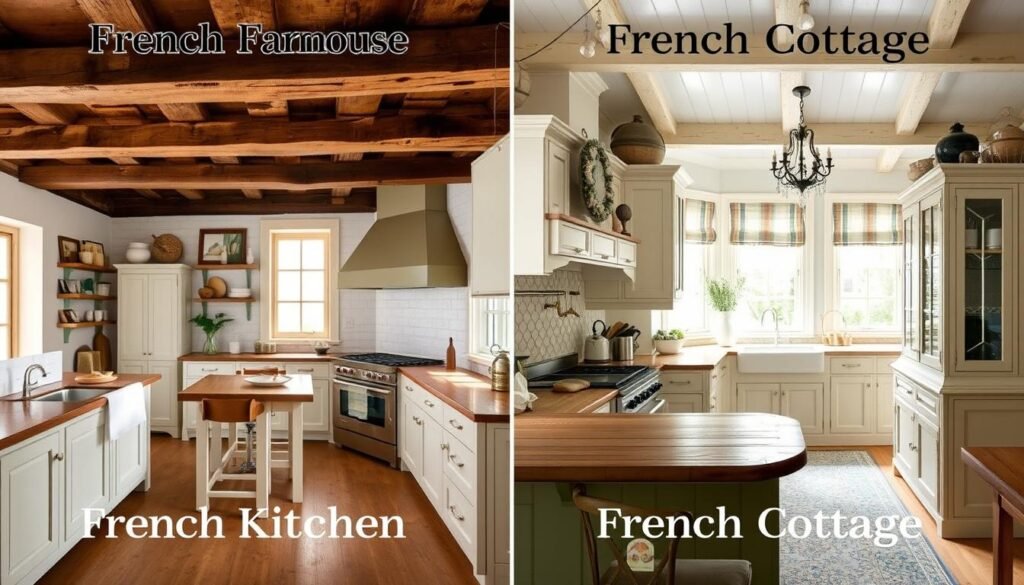
Side-by-side comparison highlighting the distinctive elements of each French kitchen style
Let’s break down the key differences between these two charming French styles. Think of this as your cheat sheet for when your design-savvy friend tries to test your French kitchen knowledge.
| Feature | French Farmhouse | French Cottage |
| Size & Scale | Larger, more spacious with room for big farm tables | Smaller, more intimate spaces with clever storage |
| Wood Treatment | Natural, often weathered or reclaimed | Frequently painted in soft colors |
| Decorative Elements | Practical items as decor (copper pots, baskets) | More intentional decorative touches |
| Furniture Style | Sturdy, substantial pieces with simple lines | More delicate with curved details and some ornamentation |
| Color Palette | Earthy neutrals with occasional bold accents | Softer pastels and more varied color schemes |
| Flooring | Stone, terracotta, or wide plank wood | Smaller tiles, painted wood, or delicate patterns |
| Overall Vibe | Rustic elegance with emphasis on function | Charming refinement with emphasis on coziness |
Despite their differences, both styles share that unmistakable French je ne sais quoi—a certain effortless charm that makes you want to slow down, enjoy a crusty baguette, and pretend you know how to pronounce “Bouillabaisse” correctly.
Common Elements: Where Farmhouse Meets Cottage
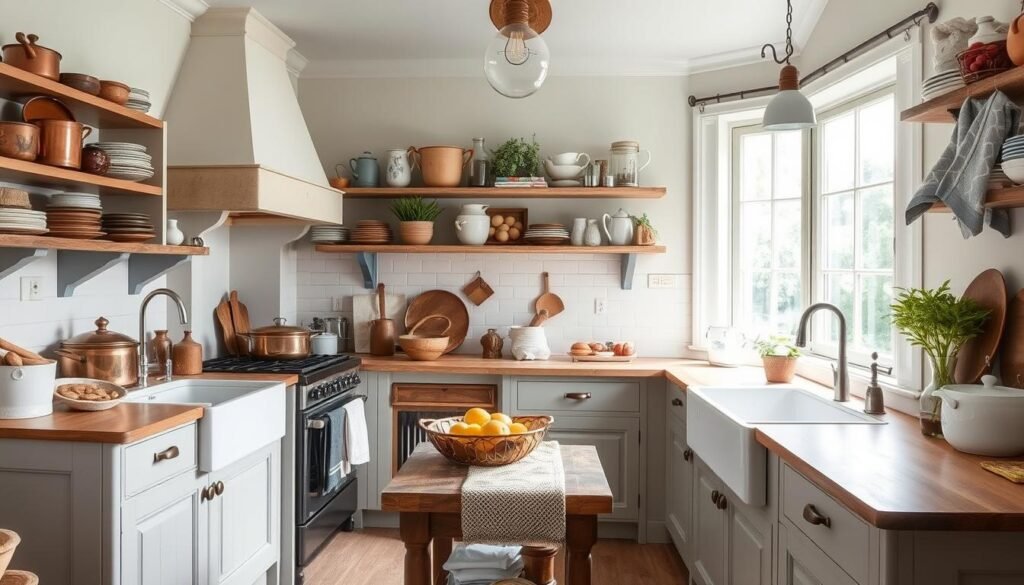
Before you start an identity crisis over your kitchen style, let’s acknowledge that these two French cousins share plenty of DNA. Here’s where they find common ground:
Natural Materials
Both styles embrace authentic materials that age beautifully. You won’t find much laminate or vinyl in either style. Instead, expect:
- Real wood (whether painted or natural)
- Stone surfaces
- Ceramic tiles
- Metal accents (especially copper and wrought iron)
Antique and Vintage Elements
Neither style is about matching sets from a big box store. Both incorporate:
- Antique furniture pieces
- Vintage cookware and tools
- Items with history and patina
- Pieces that tell a story
Farmhouse Sinks
Despite the name, these deep, practical sinks appear in both styles. The difference might be in the material—stone or fireclay for farmhouse, porcelain for cottage—but the functional form remains similar.
Open Storage
Both styles favor some degree of open storage, whether it’s open shelving, plate racks, or glass-front cabinets. The French aren’t afraid to display their everyday items as part of the decor.
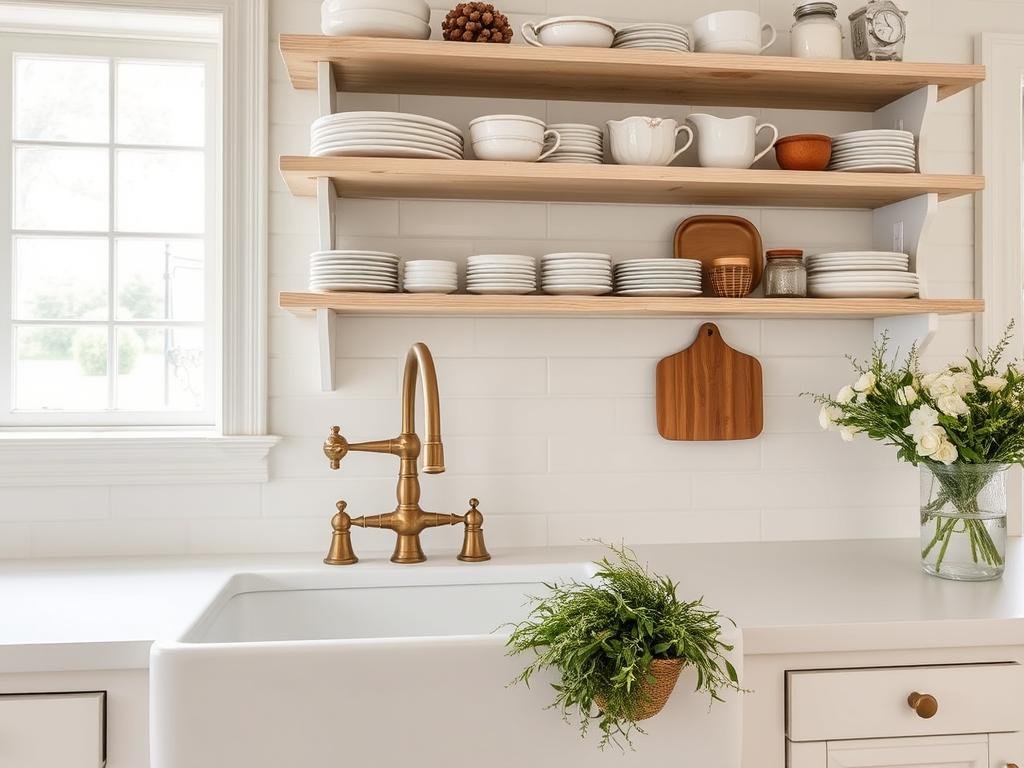
Both styles also share a certain attitude—a casual elegance that feels lived-in and authentic rather than staged. Neither is trying too hard to impress, which ironically makes them all the more impressive. It’s like that friend who looks amazing without makeup while the rest of us are over here with 17 products just to look “natural.”
Which Style Fits Your Life? (Spoiler: Wine Storage Matters)
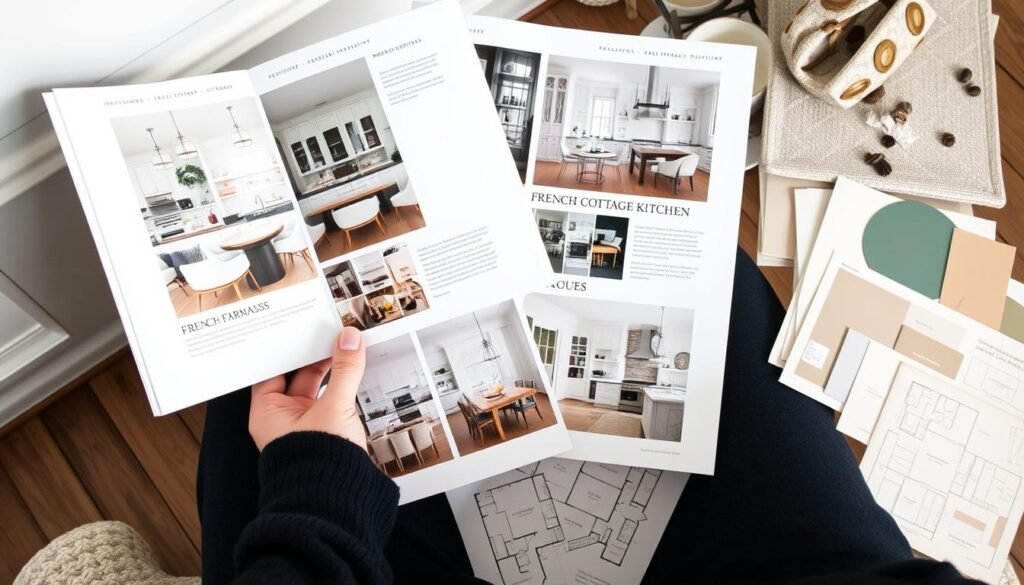
Choosing between these two gorgeous styles isn’t just about aesthetics—it’s about how you actually live. Let’s be real: that all-white cottage kitchen looks dreamy on Pinterest, but if you regularly cook spaghetti sauce from scratch (or have kids who think ketchup is a food group), you might want to reconsider.
Choose French Farmhouse If You:
- Entertain large groups regularly
- Cook elaborate meals from scratch
- Prefer function over decoration
- Have a larger kitchen space
- Don’t mind (or actually prefer) patina and wear
- Store wine by the case rather than the bottle
Choose French Cottage If You:
- Prefer intimate gatherings over large parties
- Enjoy decorative details and pretty vignettes
- Have a smaller kitchen space
- Like to change accessories seasonally
- Appreciate a lighter, brighter color palette
- Store wine by the bottle rather than the case
Of course, many of us fall somewhere in between. My own kitchen has the exposed beams and stone floors of a farmhouse but the painted cabinets and decorative touches of a cottage. I call it “Farmage” or “Cottouse” depending on my mood. The French would probably just call it “American confusion,” but hey, it works for me!
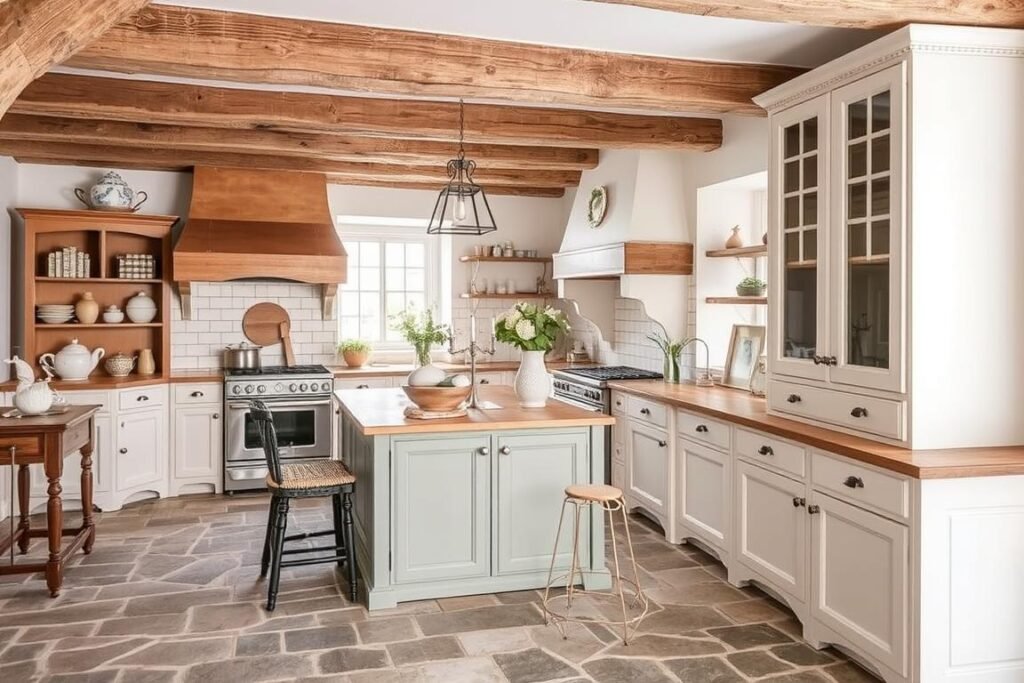
A hybrid approach combining elements from both French kitchen styles
Budget Considerations
Let’s talk money, because unless you’ve inherited a château, budget matters. Generally speaking:
Farmhouse Budget Tips
- Reclaimed materials can be cost-effective (sometimes)
- Fewer decorative elements means less spending on accessories
- Rustic finishes can hide imperfections, saving on perfect installations
- Open shelving is cheaper than cabinetry (but requires more dusting!)
Cottage Budget Tips
- Paint transforms basic cabinetry into cottage charm
- Smaller spaces mean less material needed overall
- Vintage accessories can be found at flea markets and thrift stores
- DIY decorative elements like curtains and cushions add character affordably
Creating Authentic French Kitchen Vibes
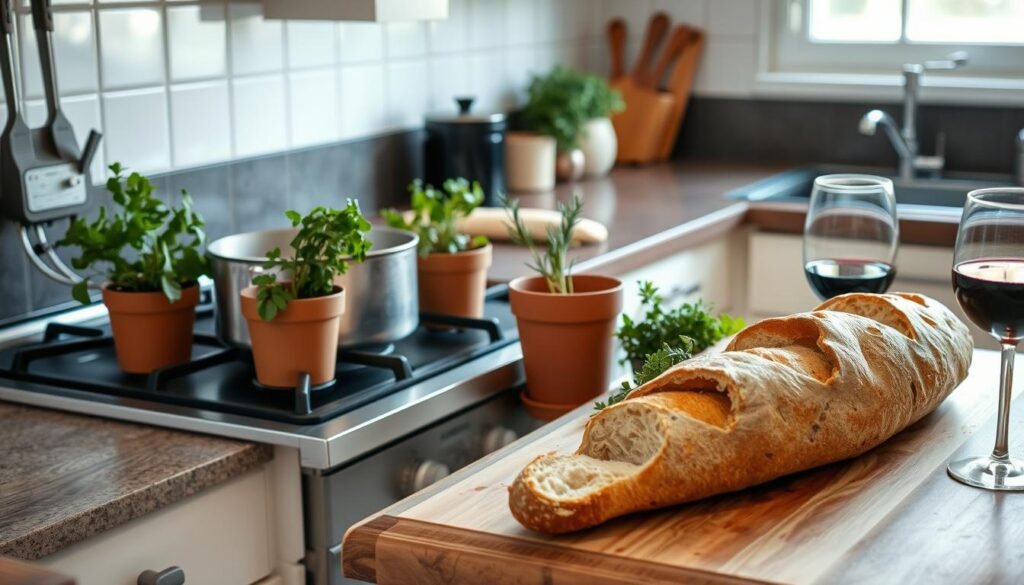
An authentic French kitchen shows signs of actual cooking and living
Whether you lean farmhouse or cottage, authenticity is what separates a truly French-inspired kitchen from a generic “French-ish” space. Here’s how to keep it real:
Must-Have Elements for Both Styles
Copper Cookware
Nothing says “French kitchen” like copper pots and pans. They’re beautiful AND functional. Display them proudly—hanging from a pot rack or arranged on open shelving.
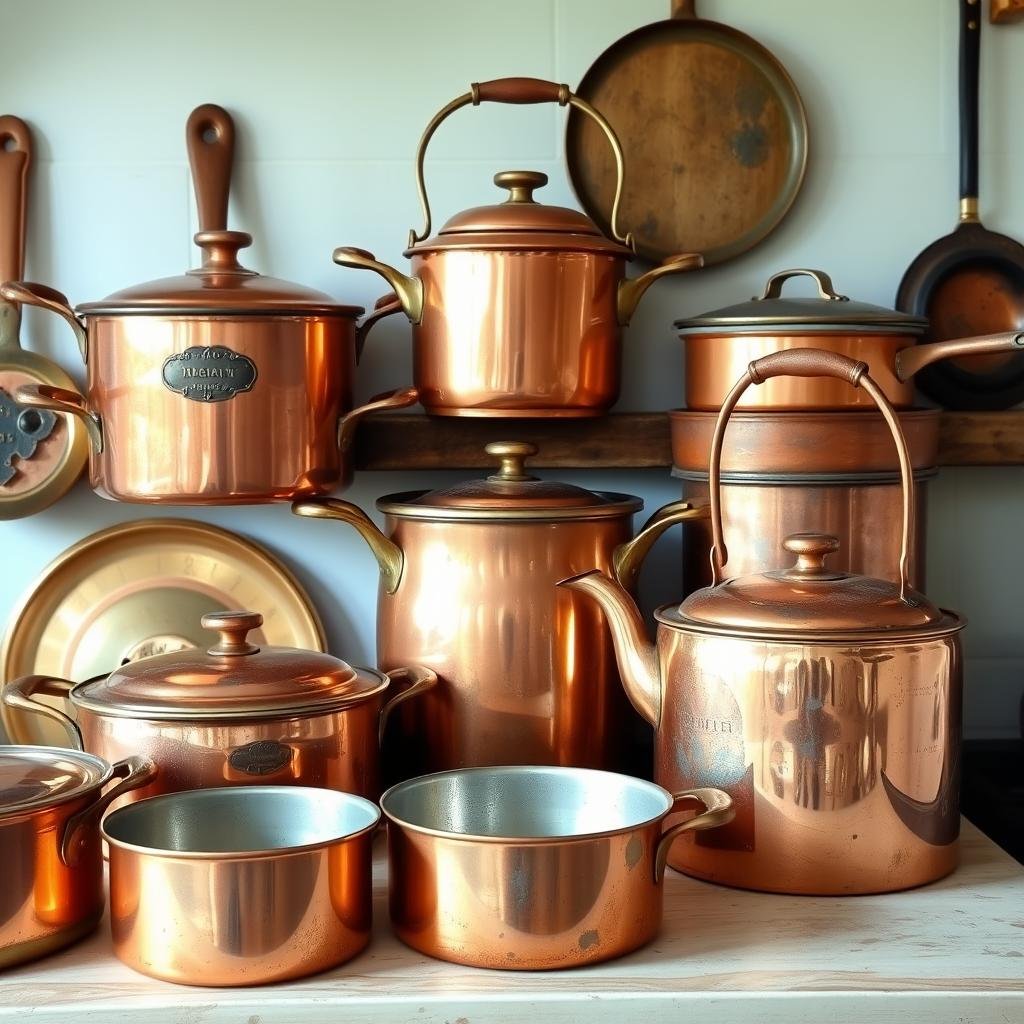
Fresh Herbs
French cooking relies on fresh herbs. Keep pots of basil, thyme, and rosemary on your windowsill or countertop. They’re practical, fragrant, and add life to your kitchen.
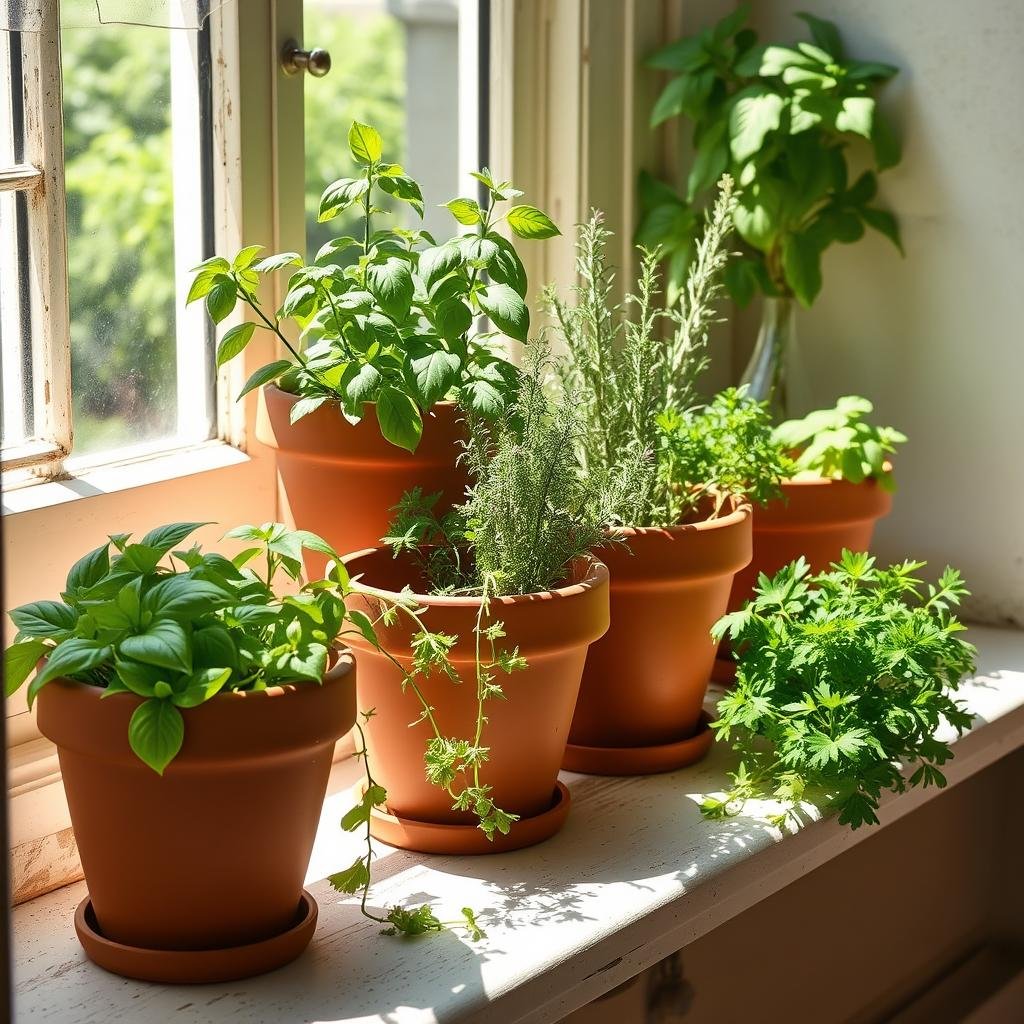
Quality Over Quantity
French kitchens aren’t cluttered with gadgets. They contain fewer, better items that last generations. Invest in quality basics rather than trendy appliances that’ll be outdated next year.
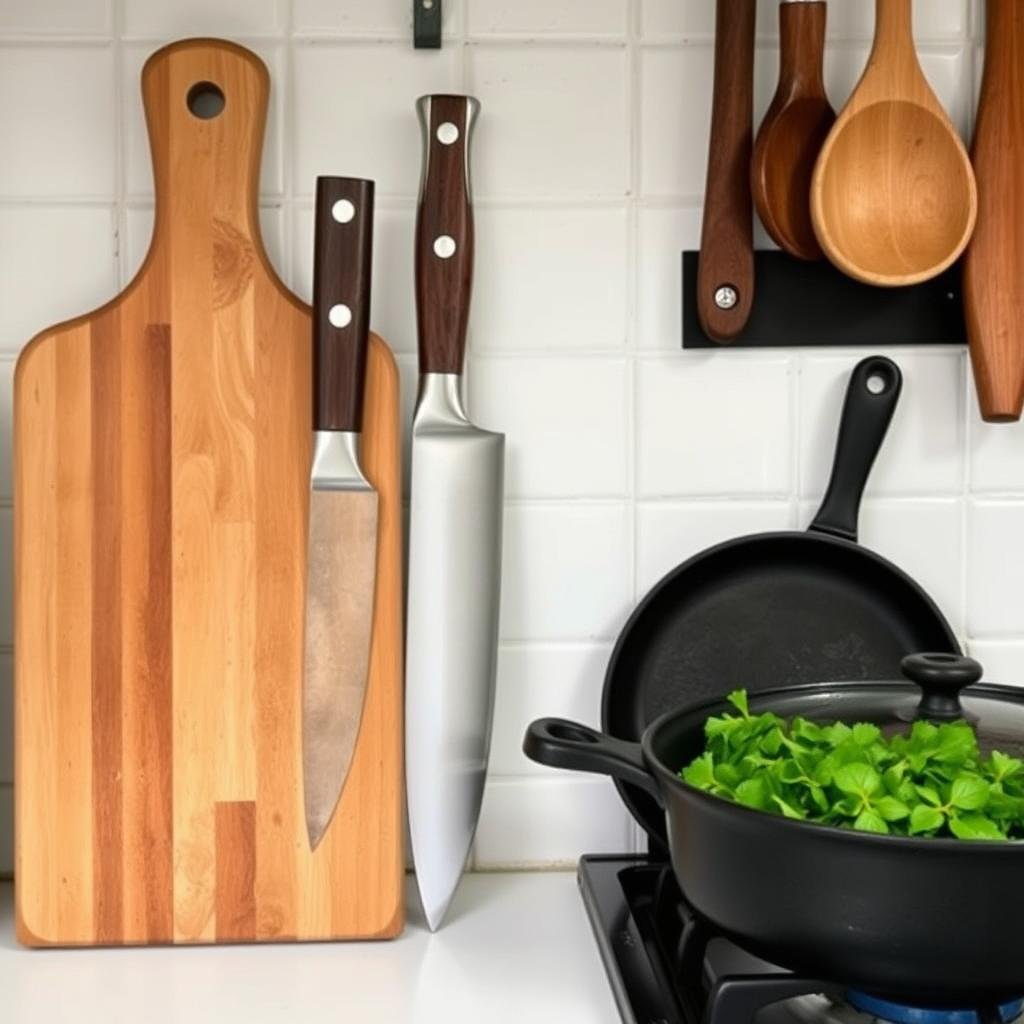
Avoiding Common Mistakes
Let’s talk about what not to do. These are the dead giveaways that your “French” kitchen was actually inspired by a HomeGoods clearance aisle:
The most authentic French kitchens look like they evolved over decades, not like they were installed last Tuesday. Embrace imperfection—it’s what gives these spaces soul.
- Skip the “Bon Appétit” wall decal. Real French kitchens don’t announce their Frenchness with words.
- Avoid the Eiffel Tower everything. Unless you actually live near the Eiffel Tower, this is the equivalent of decorating with Statue of Liberty figurines.
- Don’t make everything match perfectly. Authentic French kitchens evolved over time, mixing old and new.
- Beware of too-perfect distressing. That factory-distressed furniture with identical “wear marks” isn’t fooling anyone.
Remember, the French approach their kitchens with a certain je ne sais quoi—a casual confidence that comes from knowing good design doesn’t need to shout. It whispers.
The Final Ingredient: Making It Yours
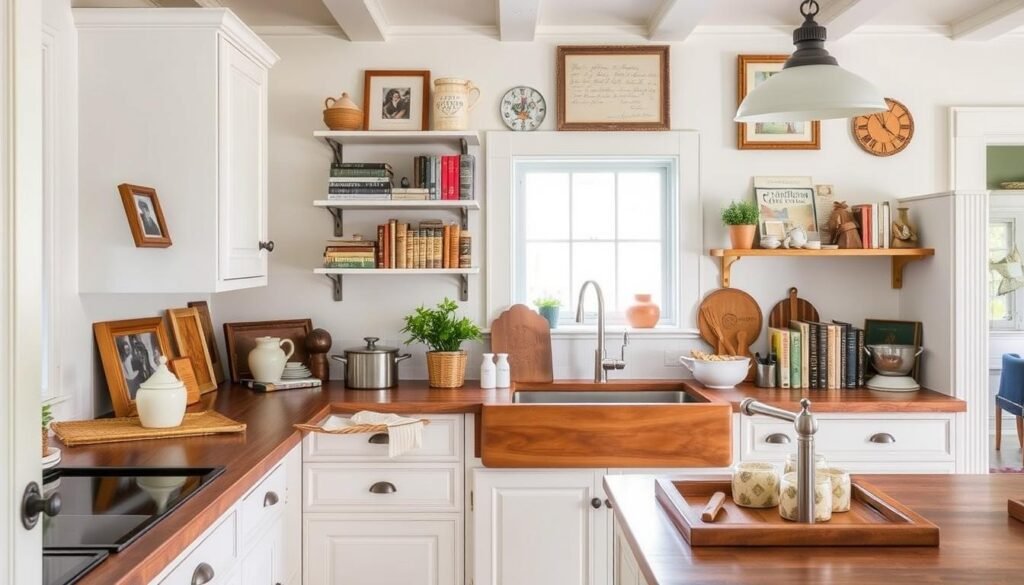
At the end of the day, the most authentic French kitchen—whether farmhouse or cottage—is one that reflects how you actually live. The French don’t design their kitchens to impress House Beautiful photographers; they create spaces that work for their lifestyle while bringing them joy.
So take what you love from both styles. Maybe you adore the rustic beams of a farmhouse but prefer the painted cabinets of a cottage. Perhaps you want the substantial farmhouse table but with the delicate cottage textiles. It’s your kitchen—make it tell your story.
After all, the French didn’t create these distinctive styles by following someone else’s rulebook. They evolved naturally based on regional materials, practical needs, and personal preferences. The most French thing you can do is approach your kitchen with confidence and a touch of that famous Gallic shrug that says, “I like it this way, and that’s what matters.”
Bring Timeless Charm to Your Kitchen 🏡
Love the rustic elegance of French farmhouse style? Explore our curated list of must-have kitchen essentials from antique-inspired lighting to cozy vintage accents. Tap below to shop the full collection and give your kitchen the warm, inviting upgrade it deserves.
👉miafolio/french-farmhouse-kitchen-essentials
